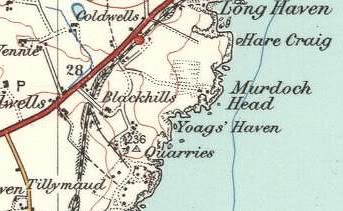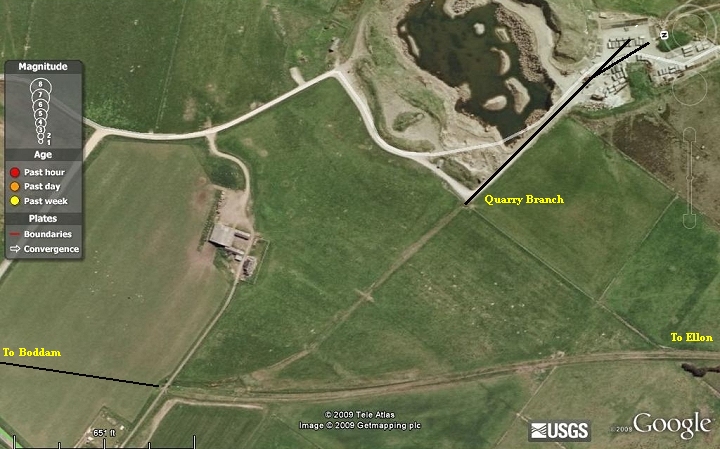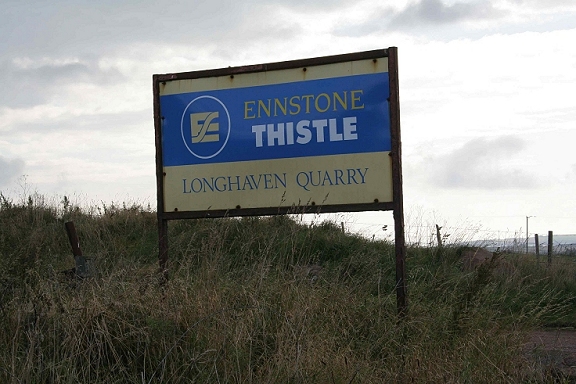(Update October 2009)
Between Buller's O' Buchan Halt and Longhaven Station there was a junction with a short branch going into a granite quarry. Reading about the Boddam Branch you would have thought that Fish was the mainstay of the line but as you learn more it is obvious that Granite and Brick also played their part in making the line viable during the early years. Likewise, most maps that I have seen over the years all show this quarry as 'Disused' but, as I found when arriving there, it is still active. This quarry should not be mistaken with Longhaven Quarry, close by the station sit and which is still in operation but was not connected to the railway, although it may have used the station for transport. I am not sure how old this quarry is, therefore it may not have existed when
the line was was in use.This walk began at the railway bridge on the opposite side of the road from the Post Office at Longhaven (28) and then along the track bed back towards Cruden Bay, with a divergence where the short branch went to the quarry. The walk then continued back on the main track bed and onto Cruden Bay.
map shows the junction site and the quarry line.
The quarry branch junction, seen from the over bridge at Longhaven. The branch run in a cutting and into the quarry site.
Ennstone Thistle Quarry sign. This quarry was served from a short branch near Longhaven
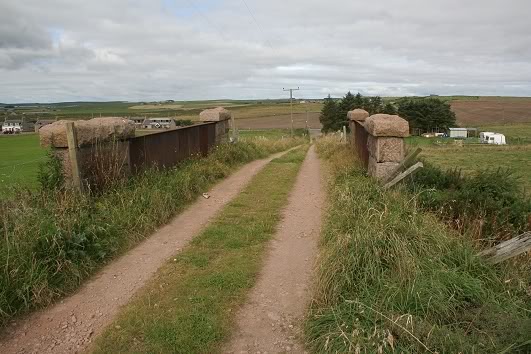
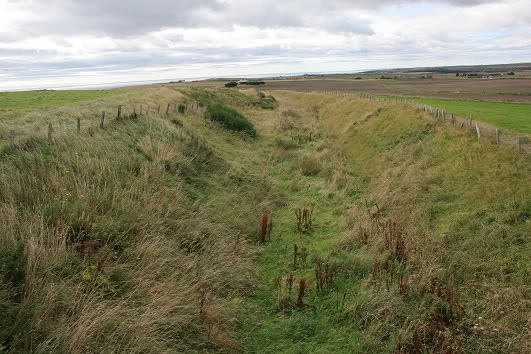
The railway bridge at Longhaven. Looking towards
the main road, with Boddam off to the right. Right: From the road bridge looking down on the loop that
went into the quarry. Just ahead on the left
you can see the indent where the track entered a cutting towards
the quarry but which has been back-filled
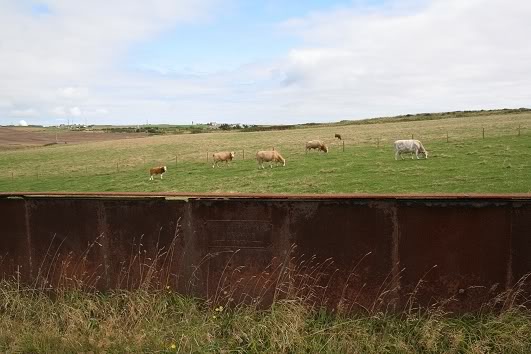
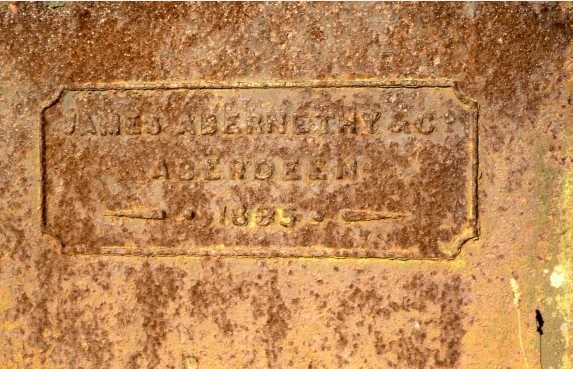
Left: The view towards Longhaven and Boddam from
the road bridge. The railway has been back-filled and
cattle graze above the trackbed.
Right: The
bridge maker's name plate (James Abernethy & Co. Aberdeen,
1895)
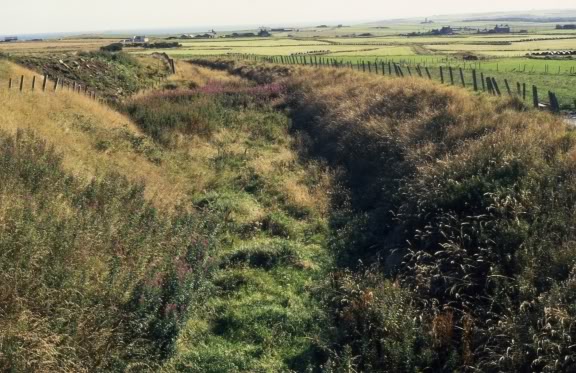
Railway
Fencing. In this view the site of the quarry loop and spur
can just be made out on the left.
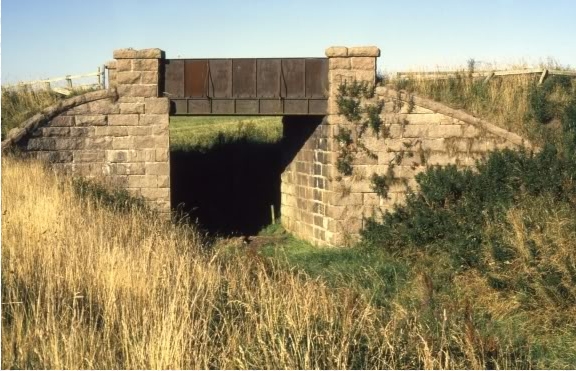
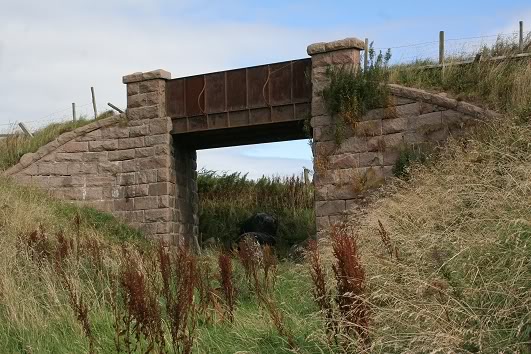
Left: The railway bridge by the quarry junction.
The track bed is back-filled beyond the bridge. Longhaven
Station was about 3/4 of a mile to the north.
Right: The
bridge from track bed level, looking towards Boddam with the
infilled track bed.
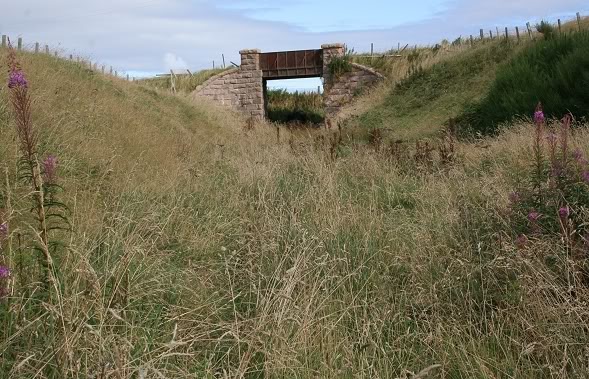
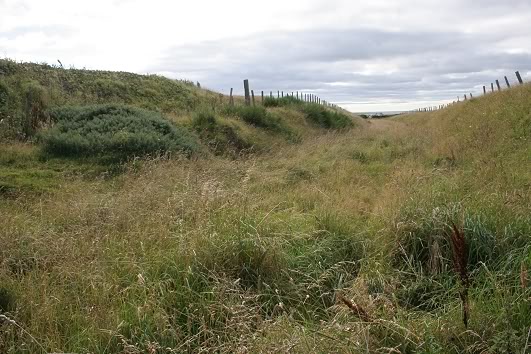
A
wider view showing the narrowing of the track bed from the
quarry loop. Right: Opposite
view. The quarry line branched off to the left. The railway
fence marks the opening of the cutting, while the
main trackbed runs towards Cruden Bay. It would be interesting
to learn if there had been a signalbox here to control the
branch, or if it operated from a groundframe. If a ground frame
it would have
operated from the key on the single-line token, which would have
locked and unlocked the points. I remember using this method
over at Esselmont on the Fraserburgh branch ,when we turned back
from there on one turn. The train would be mixed enroute and
most likely leave the wagons on the loop and enter the quarry
either as a light engine or with empty stone wagons and return
with the
loaded wagons and reform the train at this loop
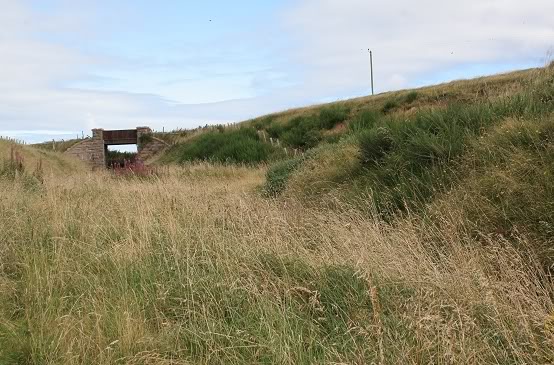
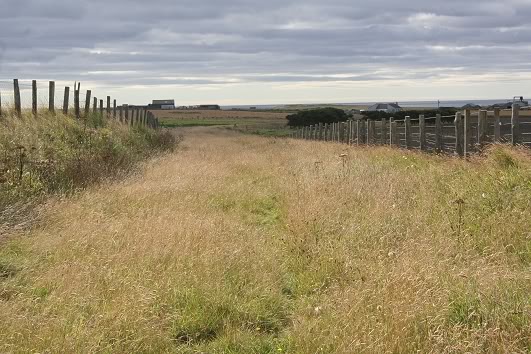
Another view
showing how the quarry line came in from the right
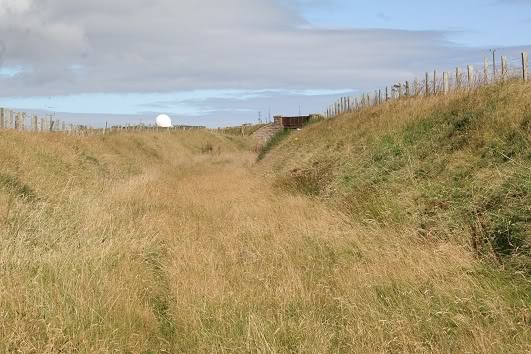
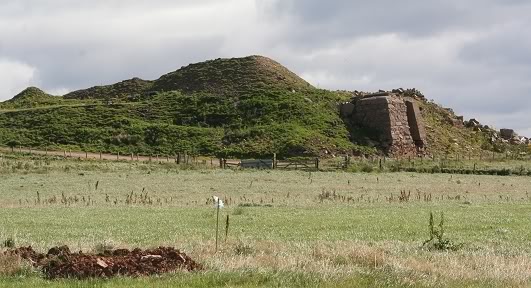
The Radar
Dome at
Boddam appears closer than it really is. Right: The quarry line came in from the extreme right and
entered the quarry by the stone structure. This is now the man
road into the
quarry. It was at this point that I was able to walk across the
field to the quarry trackbed.
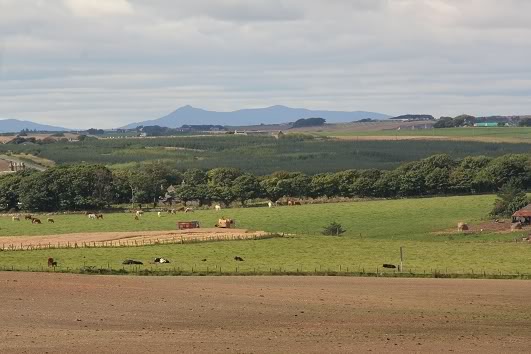
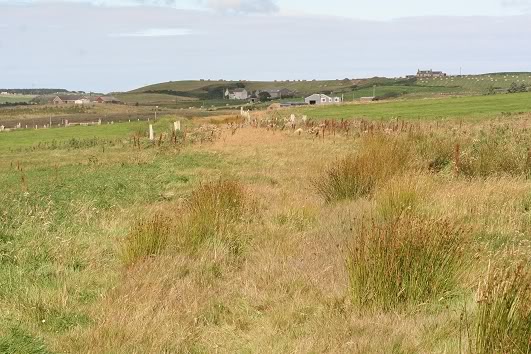
Left: L A fine 'telephoto' view from the
quarry line, with Benachie in the background. The Boddamb
ranch runs horazontally across the lower part of the photo.
Right: The quarry track bed looking towards the
junction with the mainline. This dropped down into a cutting to
joing the main line.
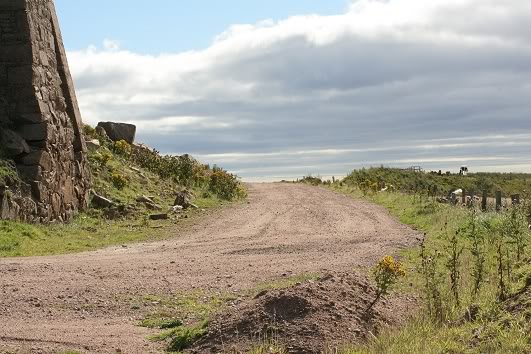
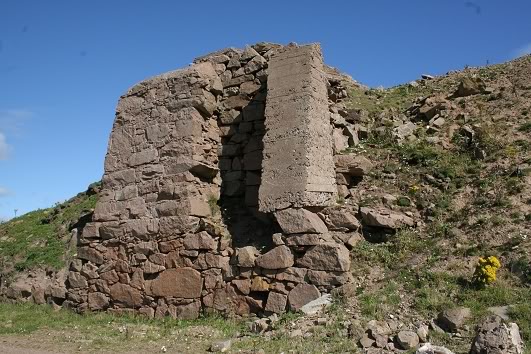
This is the entrance into the quarry. I would guess
that the road has been raised since railway days as it
looks a bit steep for railway use.
Right: It would be interesting to learn what this building
was used for. A chimney, perhaps!
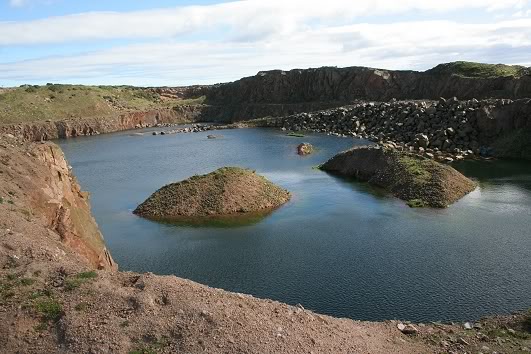
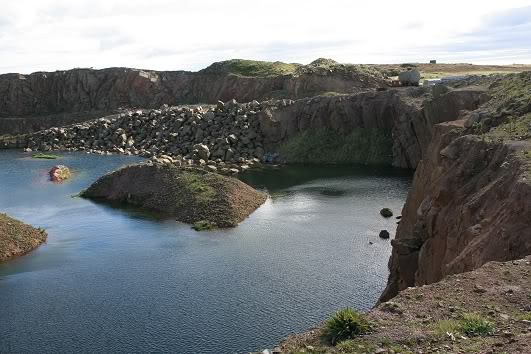
The old track bed, looking towards the junction,
where trains arrived and departed. According to Alan Sangster's
book 'The Story and Tales Of The Buchan Line' there were
two sidings within the quarry.
Right: I was surprised to find such a large quarry. It has
obvioulsy been well used over the years. I wonder what great
Buchan structures were built or dressed from this stone! Having
said that,
I believe the Trafalgar Square fountains are made from
granite from this quarry!
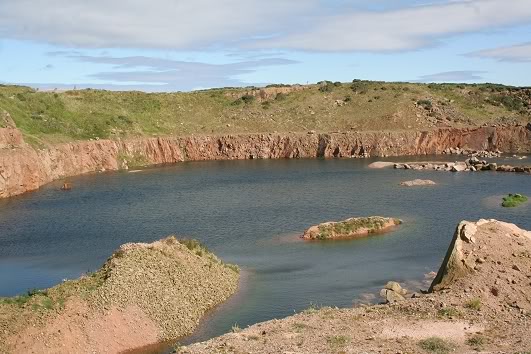

The pink shade
of Buchan granite certainly shows
up. Is this where 'Nessie' holes up for the winter!
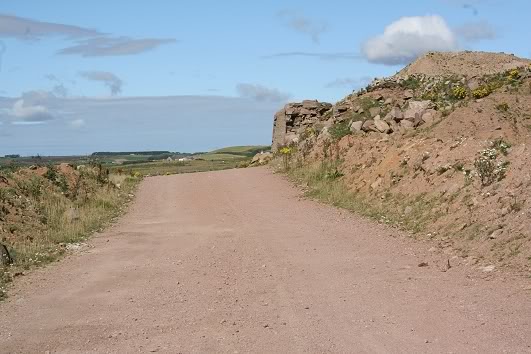
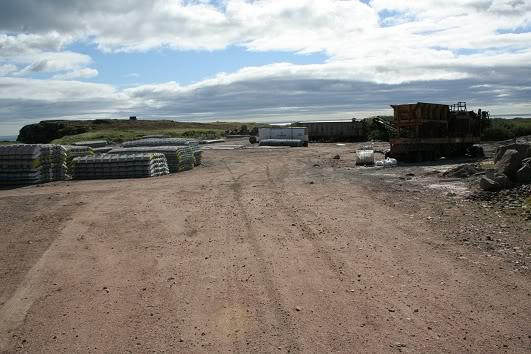
This
would have been the sight of the railway sidings. Right: Two lines
with a head shunt and points would have allowed the locomotive to
run around the train. I was told that the owner isn't keen on
trespassers
therefore, I didn't venture any further than the pile
of concrete slabs and departed as soon as I got my pictures
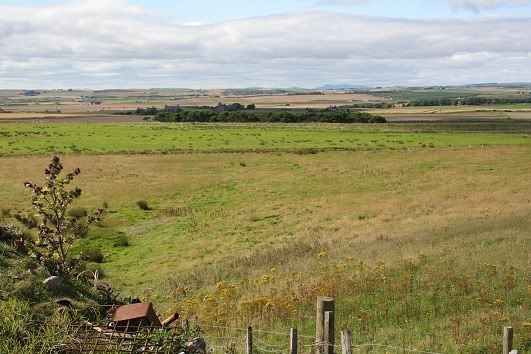

From the quarry a wide angle view shows the
embankment of the mainline running in front of the line of
trees, towards Cruden Bay. This is the field I walked across
from the track bed to reach the
quarry and back again. Right: Another surprise! All the maps I have seen show the
quarry as unused but these very new blocks prove that there is
still work going on, albeit they are concrete rather
than granite. They appear to be Tunnel linings! Unless
someone can prove otherwise! Surely, not a tunnel to Norway!
October 2009: My thanks to Steve Lamb, who emailed details of concrete blocks, above....
The
concrete blocks described in your photos at Longhaven Quarry are
called Concrete Mattresses for the Subsea Industry. They are used
for covering new layed pipelines on the seabed especially close to
wellheads. They
are lowered from a vessel at surface by the use of a special
lifting beam. The two outside edges are lifted on the ship to make
a shape like a letter "U" and the whole shooting match is lowered
to directly to come in
line with the pipework then lowered fully covering the pipe
equally either side. The divers then release the Polyprop loops
and the beam in lifted to surface again to begin the whole
prosses again. If you notice the outside
blocks have tapered edges this is to allow any fishing nets or
Trawl system to glide over any protected pipework etc. They
normally come in 6 x 3 x .15m 6 x 3 x .2m
sizes and weigh about 3-5 Ton each.
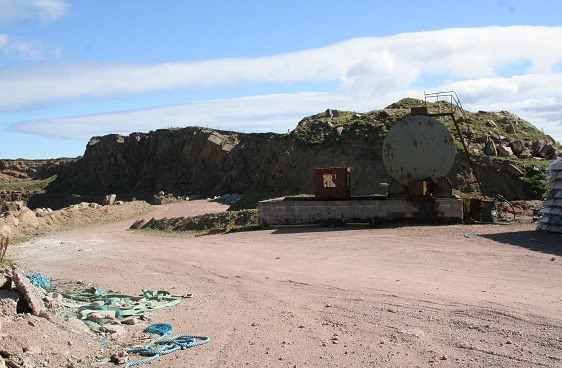
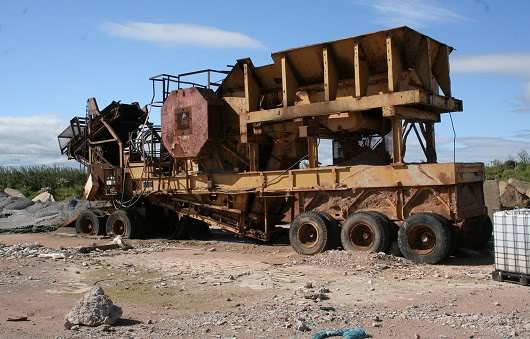
This old fuel tank appears to be still in
use. This stone crusher hasn't been used for some time
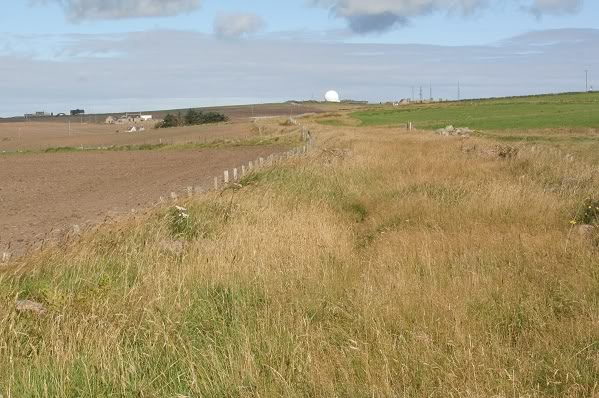
Back on the main
track bed. Looking towards Boddam.
